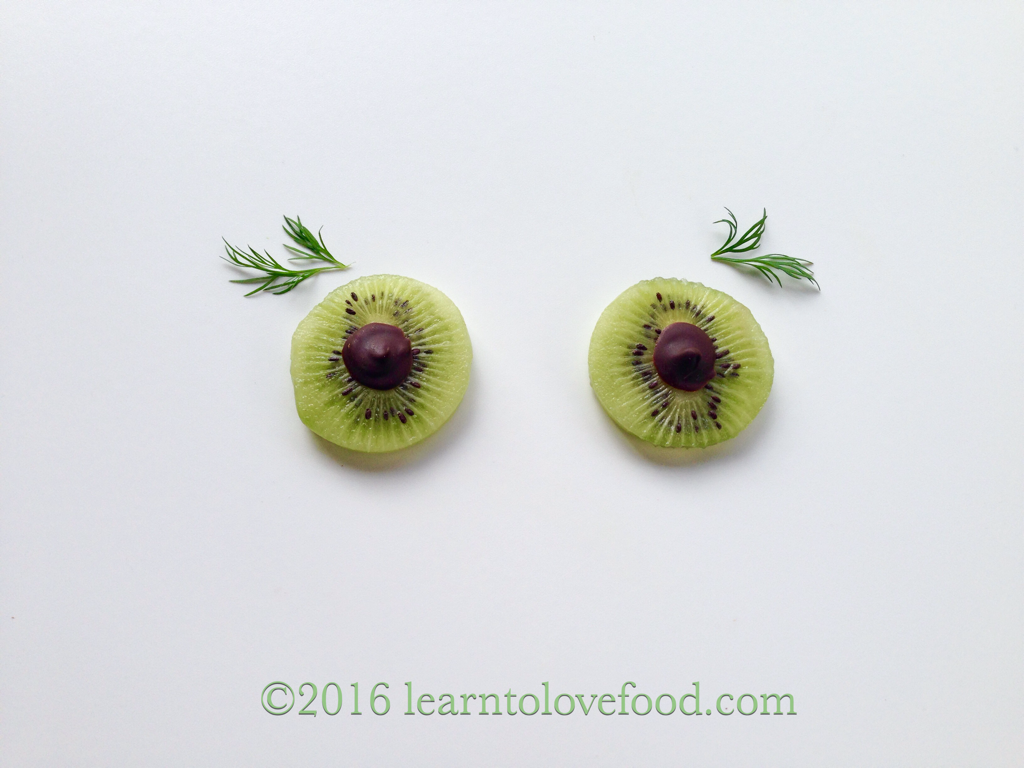Senses Series: Sight--What We See On Our Plate
 The way food looks gives us a lot of information about whether we want to smell it, touch it or eat it. Sight is often our first line of defense to find out if a food is safe. If we see mold on something, we know to throw it away; if we see a speck that looks like a bug, we're going to look closer, maybe poke at it with a fork, get some more information before deciding to put a bite into our body. Our eyes are constantly scanning our environment to help keep us safe. It's said that 80% of the information a sighted person's brain receives about the world comes from what they see. This is incredibly useful to help keep us alive, healthy and functioning at full capacity, but sometimes our vision, like anything else, can be misleading.Often people with a difficult food history have a skewed vision of foods. We have a natural revulsion to foods that have made us feel sick in the past. and when we see it, our bodies react by gagging. We can develop an aversion to any quality of food, so a certain texture, shape or color could bring up an emotional history of feeling unsafe or sick even though, in the present it may be completely safe.The way we work with aversions is to compassionately understand that our revulsion (and kids' revulsion) to certain foods or food qualities comes from this deep biological drive to keep us safe. From this place of understanding we can start to retrain our brains to recognize the reality that new situations with food are safe.We practice looking at foods in new, positive ways. We use positive language to describe foods and start to associate new meaning with what we see on our plate. Food play offers these opportunities to create new positive and safe memories with foods, though changing the way we see foods can be a slow process!So here's to our amazing sense of sight, its ability to help keep us safe and our power to slowly change what we see! All of the activities in the drop-down menu on the right offer these opportunities to start looking at foods with the curiosity and playfulness that can move our brains from a place of vigilance to a place of exploration and learning.Have fun and happy food play!
The way food looks gives us a lot of information about whether we want to smell it, touch it or eat it. Sight is often our first line of defense to find out if a food is safe. If we see mold on something, we know to throw it away; if we see a speck that looks like a bug, we're going to look closer, maybe poke at it with a fork, get some more information before deciding to put a bite into our body. Our eyes are constantly scanning our environment to help keep us safe. It's said that 80% of the information a sighted person's brain receives about the world comes from what they see. This is incredibly useful to help keep us alive, healthy and functioning at full capacity, but sometimes our vision, like anything else, can be misleading.Often people with a difficult food history have a skewed vision of foods. We have a natural revulsion to foods that have made us feel sick in the past. and when we see it, our bodies react by gagging. We can develop an aversion to any quality of food, so a certain texture, shape or color could bring up an emotional history of feeling unsafe or sick even though, in the present it may be completely safe.The way we work with aversions is to compassionately understand that our revulsion (and kids' revulsion) to certain foods or food qualities comes from this deep biological drive to keep us safe. From this place of understanding we can start to retrain our brains to recognize the reality that new situations with food are safe.We practice looking at foods in new, positive ways. We use positive language to describe foods and start to associate new meaning with what we see on our plate. Food play offers these opportunities to create new positive and safe memories with foods, though changing the way we see foods can be a slow process!So here's to our amazing sense of sight, its ability to help keep us safe and our power to slowly change what we see! All of the activities in the drop-down menu on the right offer these opportunities to start looking at foods with the curiosity and playfulness that can move our brains from a place of vigilance to a place of exploration and learning.Have fun and happy food play!
